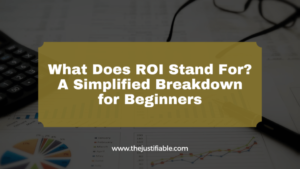Table of Contents
How to start a business with small capital! Starting a business with a small capital is a dream for many people. However, the question is, how can one start a business without having to invest a significant amount of money?
The good news is that it is possible to start a business with small capital. In this article, we will explore the various strategies that one can use to start a business with a small capital.
Identify Your Niche
Before starting any business, you need to identify your niche. Your niche is the area in which you have expertise, and it can be a product or service that you want to offer to your customers.
You need to research and identify the niche that is in demand in the market. Here are the steps that you can follow to identify your niche:
Step 1: Research the market.
To identify your niche, you need to research the market. Look for products or services that are in demand and see if there is a gap that you can fill. This will help you identify the product or service that you can offer to your customers.
Step 2: Analyze your skills and expertise.
Once you have identified the market, analyze your skills and expertise. Look for areas where you have experience and can offer value to your customers. This will help you determine the product or service that you can offer.
Step 3: Check the competition.
Check the competition in your niche. See what they are offering, how they are marketing their products or services, and how they are pricing them. This will help you determine the gap in the market and how you can fill it.
Bootstrap Your Business
Once you have identified your niche, the next step is to bootstrap your business. Bootstrapping means starting your business with limited resources. Here are the steps that you can follow to bootstrap your business:
Step 1: Start small.
Start with a small investment. You don’t need to invest a significant amount of money in the beginning. Start with what you have and gradually build your business.
Step 2: Use your skills.
Use your skills to your advantage. If you have skills in marketing, design, or coding, you can save money by doing these tasks yourself instead of hiring someone.
Step 3: Use free resources.
Use free resources like social media, email marketing, and word-of-mouth to promote your business. These are cost-effective ways to reach your target audience.
Step 4: Rent or borrow equipment.
If you need equipment for your business, you can rent or borrow it instead of buying it. This will help you save money in the beginning.
Create a Business Plan
Creating a business plan is essential to the success of your business. It will help you define your goals, strategies, and tactics to achieve those goals. Here are the steps that you can follow to create a business plan:
Step 1: Define your goals.
Define your short-term and long-term goals. These goals should be specific, measurable, achievable, relevant, and time-bound.
Step 2: Research your target market.
Research your target market and determine the needs and wants of your customers. This will help you tailor your product or service to their needs.
Step 3: Define your marketing strategies.
Define your marketing strategies and tactics to reach your target audience. This can include social media marketing, email marketing, content marketing, and paid advertising.
Step 4: Define your financial plan.
Define your financial plan, including your budget, revenue projections, and expenses. This will help you determine the profitability of your business and the amount of funding that you may require in the future.
Register Your Business
Once you have created your business plan, the next step is to register your business. Here are the steps that you can follow to register your business:
Step 1: Choose your business structure.
Choose the right business structure that suits your needs. This can be a sole proprietorship, partnership, LLC, or corporation.
Step 2: Obtain necessary licenses and permits.
Obtain the necessary licenses and permits to operate your business legally. This can include business licenses, permits, tax registrations, and zoning permits.
Step 3: Register for taxes.
Register for taxes with the federal, state, and local government. This can include income tax, sales tax, and employment taxes.
Build Your Brand
Building your brand is essential to the success of your business. Your brand is your identity, and it represents your business to your customers. Here are the steps that you can follow to build your brand:
Step 1: Define your brand identity.
Define your brand identity, including your brand name, logo, colors, and messaging. Your brand should reflect your values and resonate with your target audience.
Step 2: Build your online presence.
Build your online presence by creating a website and social media profiles. Your website should be easy to navigate and should provide all the necessary information about your business.
Step 3: Create valuable content.
Create valuable content that is relevant to your target audience. This can include blog posts, videos, podcasts, and social media posts.
Step 4: Engage with your audience.
Engage with your audience on social media and respond to their queries and feedback. This will help you build a loyal following and establish a positive reputation for your brand.
Seek Funding
Even though you can start a business with a small capital, you may require funding in the future to scale your business. Here are the steps that you can follow to seek funding:
Step 1: Define your funding needs.
Define your funding needs and determine the amount of capital that you require to scale your business. This can include hiring employees, expanding your product line, or investing in marketing.
Step 2: Research funding options.
Research the different funding options available, including loans, grants, crowdfunding, and venture capital. Each option has its own pros and cons, and you should choose the one that suits your needs.
Step 3: Prepare a business plan and pitch.
Prepare a detailed business plan and pitch to convince investors to fund your business. Your pitch should clearly articulate your business idea, market opportunity, and growth potential.
Step 4: Build relationships with investors.
Build relationships with investors and maintain regular communication with them. This will help you establish trust and credibility with them, and they may be more likely to invest in your business.






